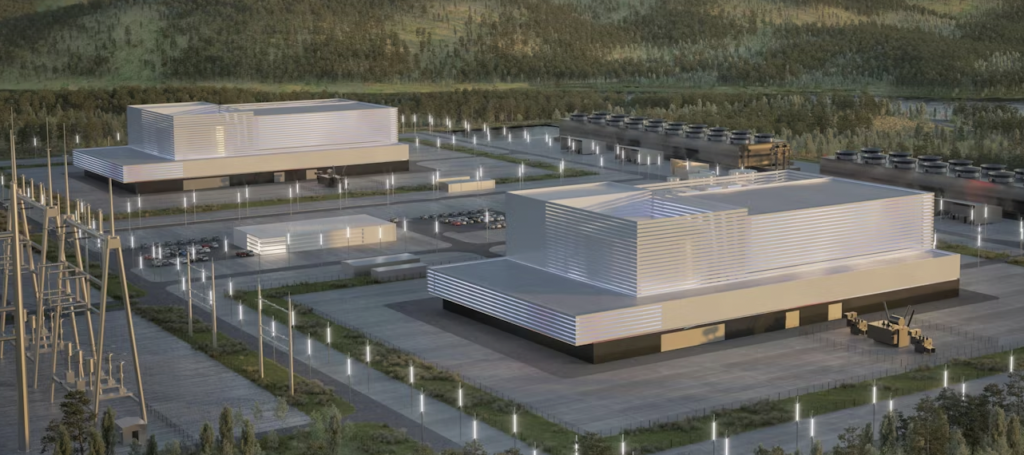Are SMRs a Key Part of a Clean Energy Portfolio?
Ratings and Applications of SMRs
Small modular nuclear reactors (SMRs) have a typical rating in the 50 to 300 megawatt (MW) range. The International Atomic Energy Agency estimates there are about 50 SMR designs in various stages of development globally. When commercialized, if the economics of SMRs are reasonably comparable to fossil fuel energy sources, SMRs could play a significant role in decreasing our future dependence on fossil fuels.
Why would you care about this nascent technology? The characteristics of SMRs make them a compelling tool in the battle against climate change and the pursuit of energy independence. Furthermore, this technology is relatively easy to integrate with the existing electrical grid. Examples:
- A small city with 42,000 homes could aggregate its residential loads and get clean electricity from a 50 MW SMR located on just a few acres of land at some remote location having adjacent electrical grid access.
- A 200 MW natural gas peaking plant emitting hundreds of thousands of metric tons CO2 annually could be replaced by four 50 MW SMRs with no emissions. The existing electrical grid tie could be reused.
- A 2 gigawatt (GW) coal-burning power plant being retrofitted with 7 SMRs each rated 300 MW would eliminate millions of metric tons of CO2 emissions per year. The existing electrical grid tie could be reused



Recent Developments
The US Nuclear Regulatory Commission issued its first certification of an SMR design in January 2023. That design, from NuScale, is being deployed in a multiple-SMR installation at Idaho National Laboratory and is expected to be in operation by 2029. Other companies working on SMR designs include GE Hitachi Nuclear Energy, Terrestrial Energy, TerraPower, Toshiba and X-energy, to name a few.
Small modular reactor initiative examples include:
- China Huaneng Group has a 200 MW SMR reactor in Shandong province, connected to the grid since February, 2021
- Holtec International claims its 160 MW pressurized light-water modular reactor, in conjunction with multi-stage compressors, can run the typical turbogenerator in an existing coal-fired power plant.
- A 125 MW SMR is under construction on China’s island province of Hainan
- In Romania, RoPower Nuclear began an initiative in 2022 to repower the Doicești coal plant with NuScale SMRs.
- PKN Orlen of Poland recently announced plans to deploy as many as 76 SMRs in 26 locations by 2038
- Recently Fermi Energia of Estonia announced a partnership with GE Hitachi Nuclear Energy to deploy a 300 MW SMR.
Commercialization
- Classic nuclear power plant projects are huge, complex construction projects located on massive sites. SMRs can be built in a modular manner, with modules produced in a factory. In a factory environment, productivity is better than what can be achieved in a construction site environment. For example, the shipbuilding industry, experienced in building huge, complex things, has a ‘‘1–3–8 rule’’ which estimates that a 1-hour factory task will take 3 hours in an assembly area and 8 hours if done at a construction site. A factory environment is also more conducive to effective quality control than a construction site environment.
- Most SMR designs incorporate a passive cooling system approach relying on laws of physics, which reduces the probability of a core thermal event.
- No dependency on cooling towers or a continuous external supply of water. Without cooling towers there’s no effluent causing the thermal pollution associated with large nuclear plants.
- Smaller footprint vs. typical multi-GW nuclear plants: easier to get site approval. Example: the Idaho National Laboratory 920 MW SMR installation will have about a 35-acre footprint, while a traditional nuclear plant producing the same amount of electricity would require about 500 acres.
- As a continuous source of electricity, SMRs can be paired with intermittent clean energy sources such as wind and solar. When the intermittent sources aren’t producing anything, the SMRs chug right along.
SMR Cons
- Nuclear waste is produced, although a recent study by Argonne National Laboratory suggest this issue is comparable to that of conventional nuclear reactor power plants [1]
- The economics of deployment and operation of plants employing this technology are unknown. UPDATE 07/15/23: As an example of economic uncertainty, the NuScale SMR pilot plant at INL has risen in cost from its initial budget in 2021 of $US 5.3B (billion) to $US 9.3B due to inflation and higher interest rates. That will put its cost on par with full-scale reactor plants under construction.
Summary
This is a very promising technology that provides hope for reducing fossil fuel dependency. It is worthwhile to keep a close watch on developments in this segment of the nuclear power generation industry.
If you agree that this technology holds promise, encourage your elected representatives or energy policymakers to support initiatives to further research, development and deployment
[1] Argonne releases small modular reactor waste analysis report, Jared Sagoff, November 18, 2022 https://www.anl.gov/article/argonne-releases-small-modular-reactor-waste-analysis-report
Information sources and links to go deeper on the topics in this article:
DOE report on converting retiring coal-burning power plants to nuclear: https://www.energy.gov/ne/articles/doe-report-finds-hundreds-retiring-coal-plant-sites-could-convert-nuclear
The NuScale 462 MW SMR pilot project at Idaho National Laboratory got an updated approval to proceed, despite rising costs due to inflation. https://www.reuters.com/business/energy/western-us-cities-vote-move-ahead-with-novel-nuclear-power-plant-2023-02-28/
